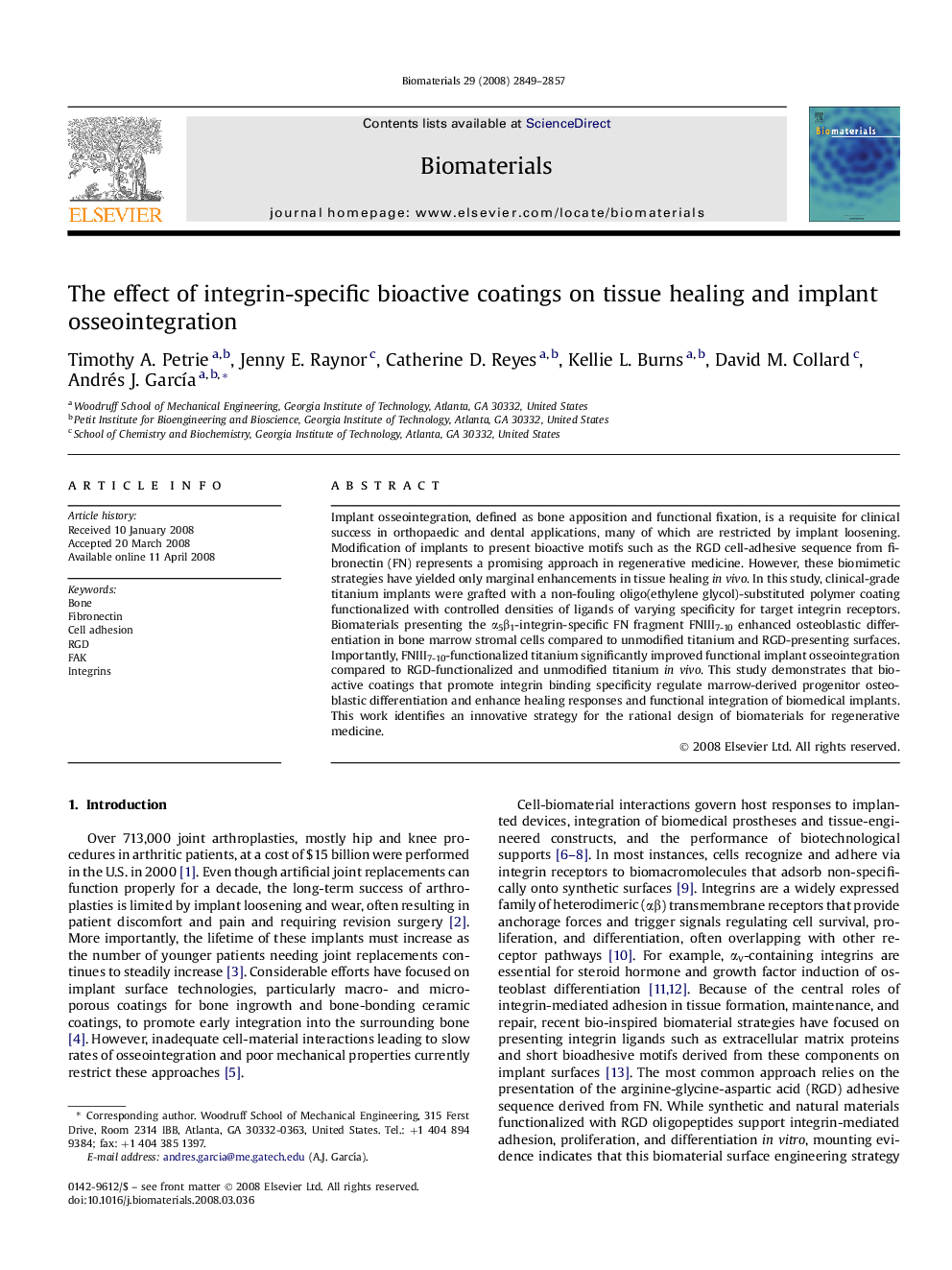| Article ID | Journal | Published Year | Pages | File Type |
|---|---|---|---|---|
| 9973 | Biomaterials | 2008 | 9 Pages |
Implant osseointegration, defined as bone apposition and functional fixation, is a requisite for clinical success in orthopaedic and dental applications, many of which are restricted by implant loosening. Modification of implants to present bioactive motifs such as the RGD cell-adhesive sequence from fibronectin (FN) represents a promising approach in regenerative medicine. However, these biomimetic strategies have yielded only marginal enhancements in tissue healing in vivo. In this study, clinical-grade titanium implants were grafted with a non-fouling oligo(ethylene glycol)-substituted polymer coating functionalized with controlled densities of ligands of varying specificity for target integrin receptors. Biomaterials presenting the α5β1-integrin-specific FN fragment FNIII7-10 enhanced osteoblastic differentiation in bone marrow stromal cells compared to unmodified titanium and RGD-presenting surfaces. Importantly, FNIII7-10-functionalized titanium significantly improved functional implant osseointegration compared to RGD-functionalized and unmodified titanium in vivo. This study demonstrates that bioactive coatings that promote integrin binding specificity regulate marrow-derived progenitor osteoblastic differentiation and enhance healing responses and functional integration of biomedical implants. This work identifies an innovative strategy for the rational design of biomaterials for regenerative medicine.
